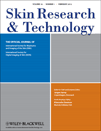Preliminary evaluation of particle systems visualization on the skin surface by scanning electron microscopy and transparency profilometry
Abstract
Background: There is a rising debate concerning the possible side effects arising from the use of particles at nanosize since the production of nanomaterials is increasing worldwide. Nanoparticles are able to enter the body through the skin, lungs or intestinal tract, depositing in several organs, and the risk associated with exposure to them, the routes of entry and the molecular mechanisms of any cytotoxicity need to be well understood. The aim of this work was to evaluate the suitability of skin replica as a method to study the colloidal systems visualization and distribution on skin surface.
Methods: Solid lipid nanoparticles (SLN) were used as carrier systems. Skin replicas on healthy volunteers, before and after SLN application, were prepared and visualized using profilometry and scanning electron microscopy (SEM).
Results: The results obtained in our study show that skin replica represents a suitable method to study the colloidal systems and their interaction with the skin surface.
Conclusion: Profilometry enabled us to observe the systems distribution on a cutaneous texture. In addition, SEM, thanks to its high magnifications and field depth, allowed us to evaluate particles' distribution on the skin texture and the interaction between particles of different compositions and replica silicone.




